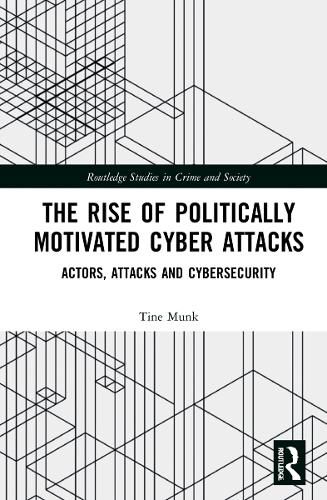Readings Newsletter
Become a Readings Member to make your shopping experience even easier.
Sign in or sign up for free!
You’re not far away from qualifying for FREE standard shipping within Australia
You’ve qualified for FREE standard shipping within Australia
The cart is loading…






This book outlines the complexity in understanding different forms of cyber attacks, the actors involved, and their motivations. It explores the key challenges in investigating and prosecuting politically motivated cyber attacks, the lack of consistency within regulatory frameworks, and the grey zone that this creates, for cybercriminals to operate within.
Connecting diverse literatures on cyberwarfare, cyberterrorism, and cyberprotests, and categorising the different actors involved - state-sponsored/supported groups, hacktivists, online protestors - this book compares the means and methods used in attacks, the various attackers, and the current strategies employed by cybersecurity agencies. It examines the current legislative framework and proposes ways in which it could be reconstructed, moving beyond the traditional and fragmented definitions used to manage offline violence.
This book is an important contribution to the study of cyber attacks within the areas of criminology, criminal justice, law, and policy. It is a compelling reading for all those engaged in cybercrime, cybersecurity, and digital forensics.
$9.00 standard shipping within Australia
FREE standard shipping within Australia for orders over $100.00
Express & International shipping calculated at checkout
This book outlines the complexity in understanding different forms of cyber attacks, the actors involved, and their motivations. It explores the key challenges in investigating and prosecuting politically motivated cyber attacks, the lack of consistency within regulatory frameworks, and the grey zone that this creates, for cybercriminals to operate within.
Connecting diverse literatures on cyberwarfare, cyberterrorism, and cyberprotests, and categorising the different actors involved - state-sponsored/supported groups, hacktivists, online protestors - this book compares the means and methods used in attacks, the various attackers, and the current strategies employed by cybersecurity agencies. It examines the current legislative framework and proposes ways in which it could be reconstructed, moving beyond the traditional and fragmented definitions used to manage offline violence.
This book is an important contribution to the study of cyber attacks within the areas of criminology, criminal justice, law, and policy. It is a compelling reading for all those engaged in cybercrime, cybersecurity, and digital forensics.